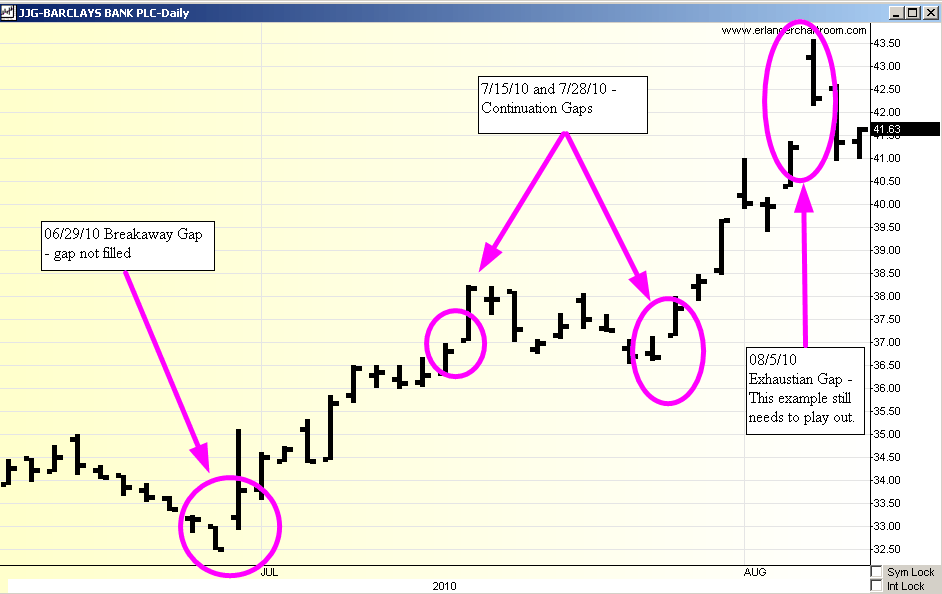Search the Site
Research Piece: Gaps Defined
Research Piece: August 2010 - by Fred Meissner, CMT
We have had enough questions on gaps, in spite of our short research note (www.thefredreport.com/articles/researchpiece073010), that we felt this month’s research piece should be a discussion of gaps. We will discuss only the main three types of gaps (breakaway, continuation, and exhaustion) and not discuss opening gaps and other types of gaps, as these are beyond the interest of most of our readers. Remember, as you read, that all gaps can be either upside or downside gaps.
The first type of gap is the Breakaway Gap. This occurs at the beginning of a substantial move. Often they occur because of a news item, or a change in the environment for a company’s business, or some other surprise. Breakaway gaps are rarely filled – say 10% of the time – and are almost always the prelude to a strong move in the direction of the gap. We show a chart of JJG below, to illustrate this sort of gap, and note that this is the most rare type of gap. The reason for this likely is that they tend to happen in stocks that are out of favor, and at the very start of moves – when there is not a lot of interest in the company. Generally the Breakaway Gap occurs on high volume.
The second type of gap is a Continuation Gap. This occurs during a move (some people call this a “Measuring” Gap and suggest that it occurs half way through a move – but this is too limiting in my opinion. Usually this is also caused by news, but occurs on normal volume, and is filled much more of the time – say 50% of the time. It can be partially filled as well. We show a couple of instances of Continuation Gaps below.
The third, and last type of gap is called an Exhaustion Gap. As the name indicates, it occurs at the end of moves and is always filled, usually quickly. The Exhaustion Gap is almost always on high volume, since it constitutes a reversal of trend. Often it is a “here we go!” type of move that suggests the very last people to enter a trend are arriving at the table. Usually, they are the meal! When an exhaustion gap occurs it is usually at the end of a move, and one can take a position in the direction of the new trend and use a stop just above the gap, with highly successful results.
One last note on gaps in currencies and foreign markets is essential. Gaps that occur in currencies and foreign market ETF’s may not in fact be gaps at all. This is because there is 24 hour trading in a lot of the underlying instruments. What this means is that U.S. investors may not see the trading, but it has occurred overseas. At The FRED Report we tend to discount gaps in these markets and expect the markets to ignore them.

Member Log In

Who is Fred Meissner, CMT?
Listen here:
The FRED Report is not authorized, endorsed, or affiliated with the Federal Reserve of St Louis and its FRED Economic Data.




